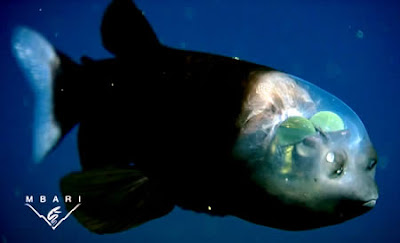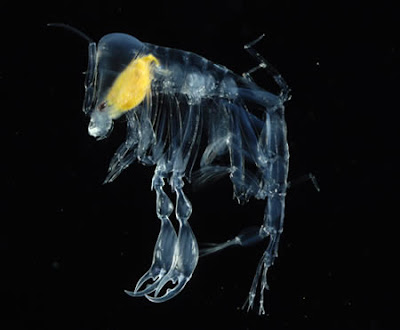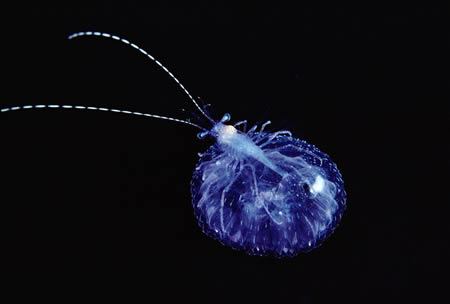 Luna 2
Luna 2Artificial objects on the Moon
 Ranger 4
Ranger 4 The Ranger fleet of spacecraft launched in the mid-sixties provided for the first time live television transmissions of the Moon from lunar orbit. These transmissions resolved surface features as small as 10 inches across and provided over 17,000 images of the lunar surface. These detailed photographs allowed scientists and engineers to study the Moon in greater detail than ever before thus allowing for the design of a spacecraft that would one day land men of Earth on its surface.
The Ranger fleet of spacecraft launched in the mid-sixties provided for the first time live television transmissions of the Moon from lunar orbit. These transmissions resolved surface features as small as 10 inches across and provided over 17,000 images of the lunar surface. These detailed photographs allowed scientists and engineers to study the Moon in greater detail than ever before thus allowing for the design of a spacecraft that would one day land men of Earth on its surface. Ranger 7
Ranger 7The Ranger fleet of spacecraft launched in the mid-sixties provided for the first time live television transmissions of the Moon from lunar orbit. These transmissions resolved surface features as small as 10 inches across and provided over 17,000 images of the lunar surface. These detailed photographs allowed scientists and engineers to study the Moon in greater detail than ever before thus allowing for the design of a spacecraft that would one day land men of Earth on its surface.
 Luna 5 USSR Luna lander bus (NASA)
Luna 5 USSR Luna lander bus (NASA) Luna 7 USSR Luna lander bus (NASA)
Luna 7 USSR Luna lander bus (NASA) Luna 8
Luna 8 Ranger 8 The Ranger fleet of spacecraft launched in the mid-sixties provided for the first time live television transmissions of the Moon from lunar orbit. These transmissions resolved surface features as small as 10 inches across and provided over 17,000 images of the lunar surface. These detailed photographs allowed scientists and engineers to study the Moon in greater detail than ever before thus allowing for the design of a spacecraft that would one day land men of Earth on its surface.
Ranger 8 The Ranger fleet of spacecraft launched in the mid-sixties provided for the first time live television transmissions of the Moon from lunar orbit. These transmissions resolved surface features as small as 10 inches across and provided over 17,000 images of the lunar surface. These detailed photographs allowed scientists and engineers to study the Moon in greater detail than ever before thus allowing for the design of a spacecraft that would one day land men of Earth on its surface. Ranger 9 The Ranger fleet of spacecraft launched in the mid-sixties provided for the first time live television transmissions of the Moon from lunar orbit. These transmissions resolved surface features as small as 10 inches across and provided over 17,000 images of the lunar surface. These detailed photographs allowed scientists and engineers to study the Moon in greater detail than ever before thus allowing for the design of a spacecraft that would one day land men of Earth on its surface.
Ranger 9 The Ranger fleet of spacecraft launched in the mid-sixties provided for the first time live television transmissions of the Moon from lunar orbit. These transmissions resolved surface features as small as 10 inches across and provided over 17,000 images of the lunar surface. These detailed photographs allowed scientists and engineers to study the Moon in greater detail than ever before thus allowing for the design of a spacecraft that would one day land men of Earth on its surface. Luna 9
Luna 9  Luna 10
Luna 10 Luna 13 USSR Luna lander bus (NASA)
Luna 13 USSR Luna lander bus (NASA) Surveyor 1
Surveyor 1 Lunar Orbiter 1
Lunar Orbiter 1 Explorer 35 (IMP-E)
Explorer 35 (IMP-E)Interplanetary Monitoring Platform-E (IMP-E) other Name Explorer 35
 Apollo 10 LM descent stage
Apollo 10 LM descent stageline drawing of lunar module spacecraft
 Luna 15
Luna 15 Apollo 12 LM descent stage
Apollo 12 LM descent stage"Bean Descends Intrepid". Alan L. Bean, Lunar Module pilot for the Apollo 12 mission, starts down the ladder of the Lunar Module (LM) "Intrepid" to join astronaut Charles Conrad, Jr., mission Commander, on the lunar surface.
 Luna 16 descent
Luna 16 descentstage
 Luna 17 & Lunokhod 1
Luna 17 & Lunokhod 1 Apollo 13 S-IVB (S-IVB-508)
Apollo 13 S-IVB (S-IVB-508)Oggetto
Apollo 7 S-IVB rocket stage in Earth orbit on October 11, 1968. The photograph was taken as the crew practices rendezvous techniques that would be needed for the later lunar flights.
Cape Canaveral and Merritt Island, Florida, can be seen beyond the left side of the lower end of the S-IVB. The mission was launched from Pad 34 at Cape Canaveral.
The S-IVB stage was used as a second stage for Saturn IB launches and as the third stage for Saturn V launches. On Saturn V flights the four Spacecraft/LM Adapter panels would be jettisoned to allow access to the Lunar Module.
 Apollo 15 Lunar Rover
Apollo 15 Lunar Rover Luna 21 & Lunokhod 2
Luna 21 & Lunokhod 2 Luna 24 descent stage
Luna 24 descent stage Hiten Orbiter (Hagoromo)
Hiten Orbiter (Hagoromo) Lunar Prospector
Lunar Prospector Moon Impact Probe
Moon Impact Probe














































